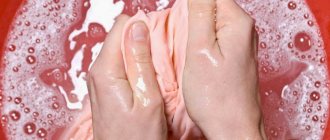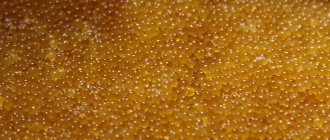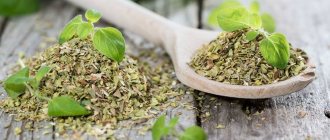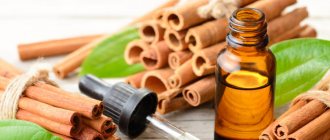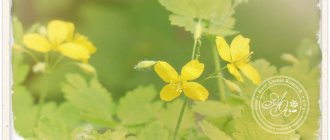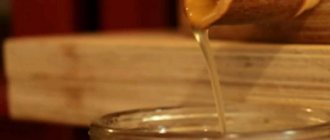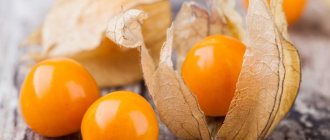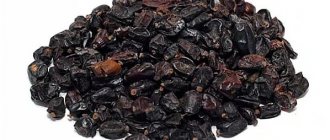Modeling from a new type of clay has become a very popular type of needlework. It is of interest to both experienced handmade artists and novice amateurs due to its unique capabilities. The multi-colored plastic mass easily changes shape, allowing you to create a variety of bright figures. Typically, these crafts are small in size, requiring a small amount of starting material. After sculpting, open packages and unused pieces remain, when storing which it is necessary to follow certain recommendations.
is a plastic substance similar to plasticine, but completely different from it in chemical composition. It is made on the basis of polyvinyl chloride. The plasticizers included in its composition impart plasticity to the raw material. When they are removed from the source material, the workpiece hardens, maintaining its given shape. The plasticizer can be removed by heat or air, depending on the type of base - baked (thermoplastic) or self-hardening. In the first case, the crafts are baked in a special oven or oven, in the second they are simply dried at room temperature.
This is not the cheapest source, so it is worth taking care of its proper storage. The proprietary sealed seal reliably preserves the quality of the raw materials. But after it is opened, additional measures are needed to preserve the plastic mass. Basic recommendations:
Where can I buy
You can purchase plastic in our online store. We offer a wide selection from different companies
If you are reading this article, you may have more than once been faced with the question of how to properly store this or that self-hardening clay in order to preserve its properties for as long as possible.
Let's list the most popular clays on the Ukrainian hobby and crafts market.
1. Creative Paperclay
The material is resistant to frost and heat, which undoubtedly plays in its favor. This means that you can safely buy this material at any time of the year.
If the material has frozen during transit or for any other reason, do not open it until it is completely thawed. Defrosting should take place under normal conditions at room temperature. Do not speed up defrosting by placing clay on the radiator or heating devices. The complete process of defrosting and restoring properties will take about one to two days.
Resistance to heat does not mean that now your entire stock of paper glue can be placed on the sunbathing window. This just means that transportation/delivery on hot days will not damage it.
Store paperclay at room temperature, out of direct sunlight and away from heating appliances. This applies to both closed and opened packaging of the material.
Once opened, the material can usually be stored for about a month without problems. Wrap the remaining paper glue in the original packaging, then wrap it in cling film and place it in a bag. You may take other measures, at your discretion, to prevent air from entering the package.
2. La Doll, Premix, Premier
Self-hardening clays made in Japan. They have many similarities with paperclay. Storage is similar to paper glue - read above.
3. Modena, Modena Soft (Modena, Modena soft)
Self-hardening clays for ceramic floristry. They contain PVA and latex.
Clays are sensitive to frosts below 0°. When frozen, latex molecules are destroyed, so the clay can become unplastic.
Prolonged exposure to heat and sunlight is undesirable.
Important note: clay should not be dried in the microwave!
4. Hearty, Hearty soft
Clays are poorly resistant to frost. Transportation and delivery are allowed at a temperature of -1°C.
Store at room temperature away from sunlight.
The opened material is stored without access of air inside - wrap the package with film and put it in a bag. Storage in this form is about one to three months.
5. Flumo (FLUMO)
A casting material containing natural porcelain clay.
The material is sensitive to frost - when completely frozen, grains may form. Delivery is allowed at temperatures from 0° to -1°С
Apart from the formation of grains, freezing does not in any way affect other properties of the material - color, consistency and strength. If freezing occurs, strain the material through a nylon stocking to remove any grains.
Opened material is stored tightly closed with a lid. During long-term storage, if Flumo has thickened, it can be diluted with distilled water. Distilled water can be found in pharmacies or car repair shops in your city.
6. Living Doll Clay.
Delicate clay. It should be stored at room temperature or cooler. Cannot be frozen. Do not store in direct sunlight or near heating devices - this may lead to premature polymerization. It is also advisable to use clay in the first two years from the date of production. The clay should be slightly soft when pressed. If the clay is too hard and covered with small cracks, it is expired or was stored/transported incorrectly. Clay has a peculiarity - the production date is not indicated on the packaging, this is a big disadvantage for those who want to purchase fresh clay. Therefore, you have to rely entirely on the integrity of the stores. We are ready to offer you always fresh LivingDoll clay, because... We check the production time of each batch specifically with the manufacturer, we do not deliver it in cold weather and store it correctly.
Polymer clay: questions and answers
What can be made from polymer clay?
Modeling and modeling from polymer clay
- This is a very common and
popular hobby
.
Beads, buttons, jewelry, sculptures, dolls, masks, mosaics, collectibles, laminated fittings, decorative items and illustrations for books and magazines can all be made from polymer clay. Making jewelry from polymer clay
is very popular nowadays .
Another common type of creativity is the creation of designer dolls from plastic
. In creative hands, this material provides ample opportunities for creativity. You can create many things from polymer clay, with the exception that polymer clay cannot be used to make items that will heat up above 145-150 degrees Celsius: smoking boxes, smoking pipes, hot stands, cooking utensils, tableware. Plastic is not used to create foundations or to manufacture towing devices for cars. When creating objects from polymer clay, you must first of all use common sense, and the applications of this material can be very diverse.
What is liquid polymer clay and how to use it?
Polymer clay is also available in liquid form, which is very effective for gluing parts of a product together before heat treatment. Liquid polymer clay
can be used to create printed images.
This type of polymer clay includes TLS (transparent liquid plastic), FIMO decorative gel and Kato liquid plastic. Varieties of liquid clay vary in degree of transparency; the finished product from any liquid clay can be made more transparent by selecting the firing temperature, grinding and polishing after heat treatment. Liquid polymer clay
is often used as a glaze or finishing layer on a finished plastic or clay product. Various pigments and powders can be added to liquid clay to create artificial enamel and other effects. Sculpey Diluent is a thinner, not a polymer clay, but a liquid plasticizer that can be added to any polymer clay to soften old or hard plastic.
What is “conditioning” and why is it so important?
Any polymer clay for modeling and modeling
must be conditioned (brought to the desired condition, to the desired state), even if it is already quite soft and plastic.
The conditioning process
makes the clay softer and more flexible, aligns the molecules of the polymer mass and makes them stronger.
Without proper pre-treatment of plastic, products made from it will be fragile and brittle after baking. To condition polymer clay
by hand, you need to cut the clay into small slabs (or pieces). Knead and roll the plastic into a sausage, fold it several times and roll it out again. Repeat this process at least 10 times. Conditioning polymer clay greatly simplifies and speeds up this process. It is necessary to cut the polymer clay into large slices. Roll these pieces of plastic through a pasta machine (at its thickest setting). Fold the two resulting sheets together and roll again. Fold the resulting sheet in half and roll it again. This process must be repeated 20-25 times.
How do you know if the clay is sufficiently conditioned?
One way to understand how long it takes to condition polymer clay is by mixing colors. The conditioning process can be carried out using clay of two or more colors. When the colors are completely mixed into one uniform color, the conditioning process can be stopped. It is worth noting that there is no need to condition the clay before the color mixing process or before making the “Gradient Transition”. Mixing and stirring the material when using this technique completely conditions the clay.
What is the Millefiori technique for polymer clay?
What can you do with polymer clay if it is too hard or too soft?
If polymer clay is too hard, you can soften it using a food processor (combine) with a chopper. You can add a few drops of vegetable oil to the clay. You should not add oil directly from the bottle - it is difficult to control the amount. You need to pour a little oil into a spoon and from the spoon into the plastic. Run the food processor for short periods of time and do not leave it unattended as the clay will heat up as it grinds/rotates in the food processor.
Then you need to lubricate your hands with vegetable oil and continue working with clay further. Another option to soften hard clay is to add transparent plastic to it; it is very soft and can make any hard polymer clay
. You can use a paste machine to mix the clay during the softening process.
If polymer clay is too soft, it can be made harder by removing excess plasticizer from the working mass. To do this, you need to roll out the plastic into layers and place each layer between two sheets of paper (newsprint or printing paper). You can leave the clay in this state for several hours. After drying, the clay should bend freely without cracking. Removing too much plasticizer can significantly reduce the strength of polymer clay. Finished products made from such plastic will be fragile after heat treatment. But the best way to remove excess plasticizer is to leave the clay in its package in a cool, dry place for several months. After this, the clay will become harder without losing strength.
How long can polymer clay be stored without losing quality?
Polymer clay for modeling
has a shelf life of 5 to 10 years if properly stored. Polymer clay produced 6 years ago, packaged and stored according to instructions, can still be used. But it will no longer be as plastic and pliable in work as during the first year after production. It is not recommended to store plastic bars in the refrigerator or freezer, as this leads to the evaporation of the plasticizer from the surface and the clay becomes less pliable. Store packaged blocks of polymer clay in a cool place, away from sunlight. Since plastic begins to harden at temperatures around 55 degrees Celsius, you should not leave polymer clay in the car on a hot day. It is recommended to order large volumes of polymer clay during the cold season to avoid shipping thermally untreated plastic at high temperatures. To avoid dust and pet hair contaminating the surface of untreated clay, unfinished plastic works must be covered with plastic film. It is necessary to use plastic film or special packaging bags for storing raw polymer clay. Over time, some plastic wrappers will react with untreated clay, and clay can also react with some hard plastic containers, so don't store it unwrapped. Unprocessed polymer clay can be packaged in wax paper, but you shouldn’t store plastic in it for a long time either - such packaging will eventually draw the plasticizer out of the clay.
Is it possible to add other art materials to polymer clay?
You can add a variety of artistic materials to polymer clay to create various interesting effects. They can be used both on the surface of a plastic product and mixed with the bulk of the clay. , pigments, can be applied to a textured surface to highlight a design. powdered mica is added, looks especially impressive.
.
Mica powder for polymer clay
comes in a wide range of metallic and colored reflective particles.
After adding mica powder, the clay must be thoroughly kneaded so that the mica particles are evenly distributed throughout the entire mass of plastic. The more transparent the polymer clay, the greater the illusion that mica particles are freely floating in it. Such clay will have an opalescent effect, which will be especially noticeable after final polishing, which will give the product a strong gloss. Glitter, foil, confetti and various fibers can also be added to polymer clay
: use these additives on the surface of the product or mix directly with the plastic itself. Embossing powder, alcohol-based dyes and stamp inks and other dyes - using these pigments can create interesting effects. The more transparent the plastic, the more impressive and attractive all of the above additives for polymer clay look. Finding different new materials to add to polymer clay is another opportunity to experiment with plastics. When working with fine powders and powders, it is strongly recommended to use a protective dust mask.
Polymer clay is “unfinished” plastic, namely unfinished polyvinyl chloride (PVC). It is also used to make linoleum, plastic windows, electrical insulation, children's toys and many other useful things. It is one of the most common plastics in the world.
PVC compositions used for various products also have different compositions. As a rule, they all contain PVC itself, a plasticizer (a substance that facilitates the melting of PVC), filler, coloring pigments and various additives that facilitate production or give the finished product various useful properties (light and heat resistance, frost resistance, etc.).
How is polymer clay different from ordinary plastic?
A plastic toy is made at the factory from start to finish: the initial mass is prepared, given the shape of a toy, and heated to harden. And polymer clay is only mixed at the factory. And sculpting and baking it is a personal, creative matter, and not at all a factory thing. And when you sculpt and bake your masterpiece, you complete the process of making a PVC product that we started at.
Unlike the mass used in factories to make toys, window frames and everything else, polymer clay should be convenient for modeling. It should also be well stored, remaining suitable for modeling for at least several years. We selected the composition of polymer clay so that it does not harden during storage, does not crumble or get dirty when sculpting, and does not break after baking.
An important difference is the non-toxicity of the components used in polymer clay. All substances included in its composition are approved for use in children's products, and the polymer clay itself is regularly tested for compliance with established hygienic requirements.
How to prepare clay?
Clay can be bought at the pharmacy in powder form. But it’s better to get it on your own: dig it in a quarry or near a reservoir. Just keep in mind that the mining site should be located away from large settlements, plants and factories. And you need to dig deeper - the clay will be cleaner. Many cities and regions are famous for their pottery craft. In such places you can buy good, clean clay that has not yet been subjected to chemical treatment. The clay must be elastic and free of foreign impurities. To test the quality of the clay, try moistening it with water and molding something. If the dried product does not break or crack, then the clay is good. There are many different types of clays, varying in density, color and organic composition. The color depends on the mineral content. Red, green, blue and white clay are considered the most valuable.
Blue clay
This variety is mainly mined in the Rhodope Mountains in Bulgaria. It contains a lot of cobalt and cadmium salts, and also contains silicon, nitrogen, phosphate, magnesium, calcium and potassium. Recommended in its pure form (when mixed with water for use as masks for hair, face and body). Blue clay softens and tones the skin, disinfects, activates blood circulation, cleanses acne, and whitens. It has anti-cellulite, antibacterial and anti-stress effects. There is Cambrian blue clay, masks from which significantly tighten sagging and wrinkle-prone skin.
Green clay
This type of clay is colored grass due to the presence of iron oxide. Contains magnesium, calcium, manganese, phosphorus, zinc, aluminum, copper, cobalt, molybdenum. This clay helps metabolism in the skin, it acts as a gentle peeling, tightens pores, makes the skin soft, velvety and slows down the aging process. Used for oily skin and against dandruff.
Red clay
It owes its color to a combination of iron oxide and copper. Cosmetologists say that this type of clay cannot boast of a lot of healing properties. However, it is great for sensitive skin prone to redness and irritation, for skin with signs of aging and with closely spaced blood vessels. This clay improves blood circulation and facilitates oxygen access to the deep layers of the skin, at the same time relieving allergic reactions, restoring and gently cleansing the skin. Red clay is a good absorbent. Used for iron deficiency in the body.
Pink clay
It acquired this shade thanks to a large amount of silicon. Contains red and white clay in various proportions. Is a bleaching agent. It has absorption capacity, absorbs fat from the surface of the skin, gently cleanses, soothes, smoothes and saturates the skin with oxygen, slowing down the aging process. Suitable for fair-haired girls who usually have thin, delicate skin.
White clay (kaolin)
The most popular in cosmetology. Its main property is deep but gentle cleansing and whitening. Rich in silicon, zinc and magnesium. Helps stop hair loss, strengthens brittle and weak curls. This clay is an excellent antiseptic; it is part of anti-acne cleansing masks. Ideal for thin skin. And it is best suited for oily skin, as it perfectly absorbs sebum and sweat, and also dries, tightens pores, kills bacteria, and evens out the complexion. Kaolin masks are also suitable for women of Balzac age, because white clay stimulates the production of collagen, a substance that ensures youthful skin.
Yellow clay
Rich in iron and potassium. Possessing the properties of a sorbent (cleaner), it is able to remove toxins and saturate the skin with oxygen. Best suited for dull skin.
Gray clay
The rarest species. Its distinctive ability is its deep moisturizing effect. It also has tonic properties. Recommended for dehydrated and dry skin. Using gray clay, masks are made not only for the face, but also to soften the rough skin of the elbows, knees, and heels.
Black clay
It contains biologically active substances that can normalize fat metabolism in cells. This clay is perfect for body wraps; it not only fights cellulite, but also burns fat. In addition to this, it improves blood and lymph flow, activates restoration processes in the body.
To prepare clay for use or storage , break it into pieces and dry it, then clear it of pebbles and roots, crush it into powder and sift it through a sieve. You can store it in this form, or you can pour the resulting powder with hot water in an enamel, ceramic or glass container and leave for several hours. Then you need to grind the lumps and stir the mass to a homogeneous consistency. Such a solution can stand indefinitely at room temperature.
How to store polymer clay?
The main thing when storing polymer clay is to prevent it from heating. It is known from physics that thermodynamic processes continue at any temperature except absolute zero (0°C, or minus 273.15°C). Hardening of polymer clay is also a thermodynamic process, and it obeys the general law. This means that polymer clay hardens constantly, and the faster the higher the temperature.
If at 20°C it takes several years to turn into plastic, then at 50°C 10 days are enough, and at 120°C a few minutes are enough. Therefore, if you want to preserve polymer clay longer, keep it in a cool place, away from the sun and heating appliances. You can even put it in the refrigerator if you really want to. Freezing does not harm polymer clay. Of course, before work it must be kept at room temperature until it returns to working condition.
The second rule is do not wrap polymer clay in paper or other liquid-absorbing substances. In this case, part of the plasticizer contained in the polymer clay will be absorbed into the packaging material, and the clay will lose its plasticity.
It is also undesirable to store polymer clay in open packaging. Of course, plasticizers are low-volatile, but they still evaporate. And it will be difficult to get rid of the settled dust.
It is best to leave it in its original packaging or wrap it in plastic wrap.
What to store in
Unopened original packaging can be stored as is for quite a long time. Opened packages of baked and self-cured plastic are stored differently.
Baked
Clay is not harmed by being in the open air, but still you should not keep it in this form for a long time. Firstly, the clay may become dusty, small fibers cannot stick to it, which will simply ruin the appearance of the product. Secondly, the plasticizer still evaporates. Very, very slowly. Therefore, it is better to store the clay by wrapping it in foil, cling film or wax paper.
Why is this so? The plasticizer contained in baked clay may react with some polymeric substances (foam, plastic, some polyethylenes). For this reason, wet clay should not be allowed to come into contact with plastic surfaces. For the same reason, it is necessary to prevent contact of baked and unbaked plastic - the plasticizer will react with the finished product.
Also, do not wrap raw polymer clay in paper. It absorbs plasticizer well and this makes the plastic more rigid and may begin to crumble if it remains in this condition for a long time. The exception is wax paper, as it is already saturated and cannot absorb any more.
Self-hardening
clay, unlike baked clay, is afraid of contact with air, since the water contained in it evaporates quite quickly. Therefore, it is imperative to exclude access of air to the plastic. To do this, you can wrap the piece tightly in cling film, squeezing out all the air bubbles. Some also recommend placing the resulting briquette in a tightly closed container along with a damp cloth. This container will retain moisture to prevent drying out.
If you are reading this article, you may have more than once been faced with the question of how to properly store this or that self-hardening clay in order to preserve its properties for as long as possible.
Let's list the most popular clays on the Ukrainian hobby and crafts market.
1. Creative Paperclay
The material is resistant to frost and heat, which undoubtedly plays in its favor. This means that you can safely buy this material at any time of the year.
If the material has frozen during transit or for any other reason, do not open it until it is completely thawed. Defrosting should take place under normal conditions at room temperature. Do not speed up defrosting by placing clay on the radiator or heating devices. The complete process of defrosting and restoring properties will take about one to two days.
Resistance to heat does not mean that now your entire stock of paper glue can be placed on the sunbathing window. This just means that transportation/delivery on hot days will not damage it.
Store paperclay at room temperature, out of direct sunlight and away from heating appliances. This applies to both closed and opened packaging of the material.
Once opened, the material can usually be stored for about a month without problems. Wrap the remaining paper glue in the original packaging, then wrap it in cling film and place it in a bag. You may take other measures, at your discretion, to prevent air from entering the package.
2. La Doll, Premix, Premier
Self-hardening clays made in Japan. They have many similarities with paperclay. Storage is similar to paper glue - read above.
3. Modena, Modena Soft (Modena, Modena soft)
Self-hardening clays for ceramic floristry. They contain PVA and latex.
Clays are sensitive to frosts below 0°. When frozen, latex molecules are destroyed, so the clay can become unplastic.
Prolonged exposure to heat and sunlight is undesirable.
Important note: clay should not be dried in the microwave!
4. Hearty, Hearty soft
Clays are poorly resistant to frost. Transportation and delivery are allowed at a temperature of -1°C.
Store at room temperature away from sunlight.
The opened material is stored without access of air inside - wrap the package with film and put it in a bag. Storage in this form is about one to three months.
5. Flumo (FLUMO)
A casting material containing natural porcelain clay.
The material is sensitive to frost - when completely frozen, grains may form. Delivery is allowed at temperatures from 0° to -1°С
Apart from the formation of grains, freezing does not in any way affect other properties of the material - color, consistency and strength. If freezing occurs, strain the material through a nylon stocking to remove any grains.
Opened material is stored tightly closed with a lid. During long-term storage, if Flumo has thickened, it can be diluted with distilled water. Distilled water can be found in pharmacies or car repair shops in your city.
6. Living Doll Clay.
Delicate clay. It should be stored at room temperature or cooler. Cannot be frozen. Do not store in direct sunlight or near heating devices - this may lead to premature polymerization. It is also advisable to use clay in the first two years from the date of production. The clay should be slightly soft when pressed. If the clay is too hard and covered with small cracks, it is expired or was stored/transported incorrectly. Clay has a peculiarity - the production date is not indicated on the packaging, this is a big disadvantage for those who want to purchase fresh clay. Therefore, you have to rely entirely on the integrity of the stores. We are ready to offer you always fresh LivingDoll clay, because... We check the production time of each batch specifically with the manufacturer, we do not deliver it in cold weather and store it correctly.
Preparing clay for modeling is a responsible and serious matter. For example, among the ancient Chinese, clay matured for 25 years. Since, as a rule, entire dynasties were engaged in pottery, clay for the grandson - the future potter - was helped to make by his grandfather, a master of clay. Contents
Together they dug a large hole into which they placed the clay mass. And a quarter of a century later, the boy, having already become an adult master, dug out this clay together with his son, and before that he certainly prepared a new pit for clay, from which his descendants would make beautiful porcelain.
Of course, this was more of a ritual action than the actual preparation of the clay, but before you start working, the clay really needs to sit for a while to “mature.” For this purpose, clay pits existed in Rus'. Russian potters stored clay there for several years, and these pits had log walls.
How to soften polymer clay or make it harder?
Having read how to store polymer clay, you have already realized that its gradual hardening process is natural and inevitable, albeit slow. What to do if you need a softer material to complete the craft? Polymer clay can be softened by adding a special softener, and in its absence, you can use (albeit with less success) any oil. Oils (vegetable and machine) dissolve in the plasticizer included in the polymer clay, thereby increasing the amount of plasticizer. Don't get carried away! Remember that the initial composition is balanced, and any additives (including a special softener) significantly reduce the strength of polymer clay. There is also a side effect - clay with an excess of softeners will be more flexible after baking, and with oils it will be less durable.
Now it’s clear how you can make polymer clay harder? That's right - remove part of the plasticizer. It's very simple - place the clay rolled out in a thin layer on clean, loose paper, and roll it tightly - like a carpet. After some time, the paper will be saturated with plasticizer, and the surface layers of clay will become a little harder. Unroll the “carpet”, remove the paper, mix the clay to make it homogeneous and, if necessary, repeat the procedure until the desired hardness is achieved.
The second method is to keep the material warm for some time, at 40...50°C. The pieces of material should not be large, and the temperature should not be high, otherwise the outer part will harden too much, and the inner part will not have time to warm up.
And the third way is to intensively crush a piece of material. In this case, the particles of polymer clay rub against each other, and this significantly accelerates the dissolution of PVC.
Stiffer polymer clay is less plastic and molds less well, but the craft holds its shape better before baking. Stiffer polymer clay is also better for making fine details.
Blue clay
Blue (Cambrian) clay or blue keel is a fine-grained gray sedimentary rock.
If clay in water gives a pure turquoise-blue tint, most likely a dye has been added to it - copper chlorophyllin. Masks made from this “blue clay” color the skin pale green. Real clay does not dissolve in water, but settles at the bottom of the container.
Blue clay for cosmetics 15803
Blue clay from mud springs and clay quarries contains radium. In very small quantities it is used to treat and prevent skin cancer, but in large doses radium is toxic.
When preparing clay mixtures, use plastic or ceramic dishes. In metal dishes, blue clay loses its beneficial properties.
Where did blue clay come from?
Blue clay appeared at the bottom of the Cambrian seas more than 500 million years ago. Under the influence of weather conditions, it was formed from the minerals kaolinite, spar, some varieties of mica, limestone and marble.
When temperature changes, microcracks appear in minerals. Water gets into them and, freezing, destroys the stones to the smallest dust. Over time, rock particles accumulate and become saturated with water, forming blue clay.
The history of the discovery of blue clay - from the Amazons to Cleopatra
Blue clay was first discovered on the island of Lesbos, in northern Greece, in the Aegean archipelago. In ancient times, the warlike Amazons living on the island used blue clay... as war paint. When the Greeks managed to capture the rebellious beauties and wash away the clay from their faces, they were amazed at the beauty of their captives. Many Amazons were sent to court as concubines, exchanged, or given as gifts to the rulers of neighboring countries. This is how the whole world learned about the secret of the beauty of indomitable warriors. Even Cleopatra herself made masks for her hair, face and body from blue clay.
Today, blue clay is mined in the Crimea (Sapun - Gora), from Sevastopol to Simferopol and in Altai in quarries at least 20-25 m deep. Then the clay is washed and cleaned of impurities, dried and packaged.
Effect and application of blue clay
Blue clay is an excellent cleansing, disinfectant, regenerating and anti-inflammatory agent. Even ancient Greek doctors noticed that in clay pots, milk does not sour for up to 3 days, and meat sprinkled with clay crumbs does not spoil for a long time. Almost 4,000 years later, modern scientists have confirmed the ability of clay to neutralize microbes and toxins, prevent rotting and decomposition.
Face and hair masks, anti-cellulite wraps and facial compresses are made from blue clay. Blue clay is also used for clay baths. Penetrating into the middle layers of the skin (dermis), blue clay stimulates metabolism and skin regeneration. Blue clay is suitable for any skin type. Solutions from blue clay (1 teaspoon per glass of water) are drunk to cleanse the body. Blue clay has such healing properties due to its composition.
Chemical composition of blue clay:
| Microelement | 100g blue clay | Importance in cosmetology |
| Silicon (Si) | 180-775 mg | Strengthens nails and hair, promotes rapid healing of wounds |
| Calcium (Ca) | 25-60mg | Regulates metabolism in the skin |
| Aluminum (Al) | 12-40mg | Promotes scarring of seams, reduces pores, cleanses the skin of pimples and blackheads |
| Manganese (Mn) | 11-30mg | Anti-allergen, resolves bruises and swelling |
| Iron (Fe) | 8-15mg | Provides a beautiful blush |
| Sodium (Na) | 9mg | Tightens enlarged pores, mattifies the skin |
| Zinc (Zn) | 6-9mg | Controls the saturation of the skin with amino acids, strengthens nails and hair |
| Magnesium (Mg) | 4-8mg | Reduces allergies and stress, strengthens hair and nails |
| Potassium (K) | 3-6.3 mg | Controls the amount of fluid in the skin |
| Nitrogen (N) | 3-8.5 mg | Tones the walls of capillaries and blood vessels, gives a healthy complexion |
| Chromium (Cr) | 3-3.8 mg | Removes excess fluid and prevents the development of cellulite |
| Phosphorus (P) | 2.2-2.5 mg | Increases the body's resistance and makes the skin elastic |
| Molybdenum (Mo) | 2-3.8 mg | Stimulates skin regeneration |
| Copper (Cu) | 1.4-3 mg | |
| Nickel (Ni) | 0.6-1 mg | Normalizes sebum secretion |
| Silver (Ag) | 0.3-0.8 mg | Cleanses and activates the protective functions of the skin |
| Cobalt (Co) | 0.08-0.25 mg | Promotes the absorption of calcium and phosphorus |
| Radium (Ra) | 0.006-0.012 µg | As an alternative prevention for skin and breast cancer |
Why and how does it harden, and can it be made soft again?
Contrary to popular belief, no chemical reactions occur during normal processing (as during production, by the way) of polymer clay. Purely physical processes occur - dissolution, melting, solidification.
The fact is that before baking, polymer clay is a suspension of porous PVC grains (paste) partially dissolved in a plasticizer with the addition of an inert filler. Due to the absence of rigid connections between the particles of the mass, it can be easily deformed (sculpted). When polymer clay is baked, the high temperature causes the PVC to melt. The presence of a plasticizer sharply reduces the melting point of PVC grains. As a result, individual grains begin to fuse with each other already at 100°C, enveloping the filler particles and forming a solid body, which is still fragile when hot and even retains some flexibility.
When the product cools after baking, the molten PVC hardens, just as molten glass hardens. PVC hardened under such conditions actually becomes a so-called solid solution of the polymer in the plasticizer. Due to the fact that previously solid particles have passed into the solution, baked polymer clay is much harder than unbaked clay, and most importantly, there is no free plasticizer left in it, which previously acted as a lubricant and made modeling easier.
Most of the plasticizer included in polymer clay is bound by polyvinyl chloride, but some of it evaporates, which is what causes a specific odor during baking.
Now, in order to return polymer clay to its original state, you will have to separate the plasticizer from the polymer, and even separate the grains that have fused together, return them to their original porous structure, and mix them again with the plasticizer. You understand that doing this is no easier than turning a well-fried cutlet back into a piece of meat.
Why does the color change when baked?
The composition of polymer clay, as a rule, includes coloring substances - pigments or dyes. They are evenly distributed in the mass and color it in the chosen color. But color is determined not only by pigment; it is also influenced by the structure of the material.
Remember, ice is transparent, but snow is quite the opposite, but both are just solid water. It's all about the structure - ice is most often homogeneous, and snow consists of snowflakes, each face of which reflects and refracts light in its own way.
Likewise, polymer clay, until it is heated, consists of tiny, light-scattering grains that partially reflect the white light falling on them. After baking, the clay becomes solid, the light-reflecting edges disappear, and the incident light is reflected only by the pigment particles, and only rays of a certain color are reflected. That is why, when baked, the colors of polymer clay most often become darker, deeper, and more saturated.
This is not at all a defect or a sign of poor quality material, as is sometimes thought. but a manifestation of the laws of light scattering and the mechanism of color perception of the human eye.
Of course, if the baking temperature is violated, the colors also change, and the polymer clay itself deteriorates irreversibly, but that’s a completely different story.
Composition of blue clay
Blue clay contains all the mineral salts and trace elements that a person needs.
| Microelement | Importance in cosmetology |
| Silicon | Promotes strengthening and healing of nails, hair, as well as healing of small wounds |
| Calcium | Restores metabolism in the skin |
| Aluminum | Tightens pores, relieves skin rashes (pimples, blackheads), promotes scarring of seams |
| Manganese | Is an anti-allergen, resolves bruises and swelling |
| Iron | Gives a healthy complexion (blush) |
| Sodium | Tightens pores, smoothes complexion |
| Zinc | Saturates the skin with amino acids, heals nails and hair |
| Magnesium | Reduces allergies and stress, strengthens hair and nails |
| Potassium | Restores water content in the skin |
| Nitrogen | Improves the elasticity of capillaries and blood vessels, gives a glow to the face |
| Chromium | Helps remove excess water from the body, reduces the possibility of cellulite |
| Phosphorus | Strengthens the immune system and gives skin elasticity |
| Molybdenum | Renews skin cells |
| Copper | |
| Nickel | Restores subcutaneous sebum secretion |
| Silver | Cleanses the skin, awakens its protective functions |
| Cobalt | Helps absorb calcium and phosphorus |
| Radium | Helps prevent breast and skin cancer |
Necessary characteristics and usefulness of blue clay
- strengthens the immune system;
- cures sore throat;
- relieves gastrointestinal diseases;
- removes toxins from the body;
- cures sweet diabetes;
- helps with gout and salt deposits;
- simplifies the condition during menstruation;
- strengthens teeth;
- relieves bleeding gums;
- helps with rheumatism, pain in muscles and joints;
- reduces swelling;
- relieves the “feeling of heaviness in the legs”;
- relieves sweaty feet and eliminates nasty odors;
- fights with varicose veins;
- has an anti-cellulite effect;
- cleanses and disinfects the skin;
- activates blood circulation in skin cells;
- restores metabolism in skin cells;
- increases skin firmness and firmness;
- refines the facial contour;
- smoothes wrinkles;
- relieves skin diseases;
- strengthens and nourishes hair and scalp;
- adds shine and size to hair;
- eliminates dandruff.
Contraindications and harm of blue clay
- exacerbation of inflammatory diseases;
- eye diseases;
- hearing diseases;
- kidney and liver diseases;
- open form of tuberculosis;
- osteoporosis;
- acute cardiovascular deficiency and heart disease;
- blood diseases;
- bronchial asthma;
- inflammation of the mucous membranes of the female genital organs;
- highest body temperature.
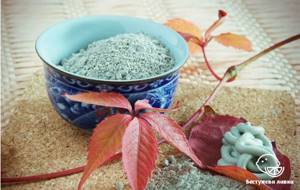
Applications of blue clay
The product is widely used for body and hair care, as well as in folk medicine.
Blue clay for face at home
It improves the condition of the skin, rejuvenates it and tones it. Constant application of masks based on it helps to cope with small wrinkles, dark spots and other skin rashes. It is most suitable for those with oily skin; if you have dry skin, you should be careful.
Why does polymer clay turn yellow when baked?
If polymer clay is baked at the recommended temperature (120...130°C), it does not turn yellow and, moreover, does not turn black. If, during baking, polymer clay acquires a yellowish or brownish tint, it means that you have significantly exceeded the permissible firing temperature.
Thanks to special additives, Artifact polymer clay can easily withstand temperatures of 135°C, and for a short time up to 140°C. However, we do not recommend that you abuse this. The fact is that, despite the absence of visible signs, when polyvinyl chloride overheats, its decomposition begins with the release of hydrochloric acid (HCl) vapors. They are what cause the yellowing of the material.
Further heating to a temperature of 150...170°C will lead to the fact that the polyvinyl chloride will begin to decompose, and the products of its decomposition will burn. Like any combustion products, they will not improve your health.
Please carefully monitor the temperature regime and ventilate the room!
What is the difference between transparent and classic colors?
Discoloration during baking is especially typical for translucent and transparent polymer clays. Unlike classic colors, transparent ones use a special filler and remove air microbubbles that scatter light. Therefore, when baked, such materials can change color in a completely unexpected way - for example, pale pink clay can turn into ruby, and pale green clay can become dark emerald.
It is worth noting that when working with transparent and translucent colors, in order to maintain transparency, it is recommended to prevent the formation of air bubbles when mixing and kneading the clay.
Classic colors, as a rule, have an opaque filler, or contain a significant amount of pigments. Therefore, despite the fusion of PVC particles, in classic colors the transparency of the mass changes little - the light continues to scatter almost the same as before baking, and the colors change to a much lesser extent.
Transparent and classic colors can be mixed, but this leads to saturation of the material with light-scattering particles from the classic color, and transparency will be largely lost.
Properties of blue clay
When taken orally, all beneficial substances are absorbed into the body, saturating it with microelements. They activate many functions, increasing immunity and enzyme production. In addition, blue clay is a strong absorbent. It neutralizes toxins that enter the body in different ways: with food, air, through the skin.
The silver ions present in the composition make the natural component a strong antiseptic.
It is noteworthy that silver is contained only in this type of clay. It is not present in brown, gray, white, yellow.
Why does polymer clay crack when baked and how to deal with it?
As a rule, all polymer materials decrease in size during hardening - this is called shrinkage. It is most often caused by changes in the structure of the polymer material during melting and other processes. Shrinkage can be reduced by adding a filler to the material that does not change its structure during heat treatment. In this case, unfortunately, some parameters of the material may deteriorate. Shrinkage values vary for polymer clays from different manufacturers and different collections of the same manufacturer.
Another reason for the appearance of cracks is the presence of inhomogeneities in the fired product - air bubbles, foreign inclusions (frame, additional dyes and fillers). Possible reasons are the use of materials from different collections and manufacturers in one craft and internal interface boundaries, for example, when two pieces of material are not completely mixed.
The third reason is uneven cooling. If you sharply cool a massive craft immediately after baking, its outer layer hardens and shrinks, while the inner layers have not yet cooled down and take up a large volume. This is how an overripe watermelon breaks its rind.
The fourth reason is the laws of geometry. Even an ideally homogeneous and uniformly heated material increases in volume in proportion to the third power (cube) of the radius, and along the surface - in proportion to the second (square). For this reason, sausages always burst along, not across, when cooked. And in our case, when heated (especially fast!), the slightly baked and shrinkage surface cracks under the pressure of the internal heated layers. The second variant of the same problem is that due to the fact that the volumetric shrinkage is greater than the surface shrinkage, multiple compressive stresses arise in the surface, generating microcracks, the so-called “scales”.
All manufacturers are trying to reduce shrinkage, or somehow compensate for it, for example, by giving the material additional elasticity. However, it will be useful to adhere to some simple principles.
Do not heat or cool your products sharply; do it gradually, preferably together with the oven in which you bake them. Do not make massive, especially spherical products. If you need to sculpt, for example, a head, use a ball rolled from aluminum foil as a base. Long and flat products are less susceptible to shrinkage cracking. When kneading and rolling out the plastic, try to avoid getting air between its layers.
More flexible types of polymer clay are less prone to cracking, and polymer clays containing a higher percentage of filler, such as the classic Artifact colors, shrink less than clear and translucent clays containing a higher percentage of polyvinyl chloride.
How to bake correctly?
The success of baking is largely determined by the quality of the oven used. The best results are achieved in a modern electric or gas oven with forced convection (built-in fan) with the grill turned off (or absent). In such a furnace, thanks to the constant mixing of air, the temperature is the same throughout the entire volume, and there is no risk of burning one side and under-baking the other. This is especially important for large products. All modern ovens automatically maintain the set temperature and are equipped with an electronic digital thermometer.
If you have to bake crafts in less than perfect conditions, you must first make sure that the temperature is not exceeded. The easiest way to do this is to place a plate of white polymer clay in a closet for 20...30 minutes. If, after removing it from the oven and cooling, it has not turned yellow and has become durable, you can bake the crafts. Yellowing indicates a noticeable increase in temperature, up to 145...150°C. And if the sample turns brown or even black, it means the oven is overheated to 160...170°C. Reduce heat, cool oven, and test again. If the sample does not turn yellow, but does not gain strength, then the oven is too cold.
It is risky to use small-sized, inexpensive ovens - they often use open heating elements and primitive controls that allow significant temperature fluctuations, especially during the initial heating. Infrared (thermal) radiation from an open element is similar to the sun's rays - it strongly heats the side of the object facing it, but does not reach the opposite side. As a result, one side of the craft will heat up much more than the other, and may simply burn, while the shadow side will remain almost cold. This effect is especially strong in grills; never use a grill to bake polymer clay!
Polymer clay, like most non-metallic materials, is a poor conductor of heat. Therefore, baking a large product must be carried out with a gradual, slow increase in temperature so that the inner layers have time to warm up. Once the desired temperature is reached, it is necessary to keep the product longer, the more massive it is, and then cool it just as slowly, preferably in the oven.
When determining the baking mode, one must proceed not from the mass of the craft, but from its maximum thickness - thin, large products will warm up quickly, but spherical ones, even if they are not too heavy, are more difficult to warm up.
The strength of baked polymer clay is highly dependent on the baking temperature, gradually increasing to approximately 140°C. It must be remembered that there are no ideal ovens and thermometers, there are errors, and it is better not to heat it to the limit, you can accidentally exceed the temperature and ruin the craft. From a safety point of view, to increase strength, it is better to increase the baking time rather than the temperature.
Do not use a microwave oven to bake polymer clay!
Why do thin plates bend and thick plates break?
This is explained by the fact that when we bend a solid plate, its upper layers tend to stretch, and the lower ones, on the contrary, compress.
In the body of the plate, especially near the upper and lower surfaces, forces arise that compress and stretch the material. The material's resistance to these forces creates mechanical stress. Up to a certain limit, the material can withstand these stresses, and then begins to collapse - microcracks form. At this moment, a light line appears on the polymer clay plate - we see light scattered and reflected by the walls of the cracks. Further abuse of the material will lead to an increase in the size and number of cracks, and then to its destruction - the plate will break.
The thinner the plate, the lower the mechanical stress, it bends more easily, it can be bent to a larger angle without breaking, and it can withstand more kinks. Therefore, it is better to make the petals and leaves of flowers from polymer clay thinner, they will break less. Thick plates are much more difficult to bend, but when bent, they will break earlier, since the mechanical stresses in them grow faster.
Mechanical stress also depends on the properties of the material - elastic (like rubber) materials do not break at all when bent, since they are easily compressed and stretched. From this point of view, the “Chiffon” collection is better suited for petals and other thin elements. A thin leaf from “Chiffon” can be twisted into a tube with impunity, and a thin sausage in general can be tied in a knot.
